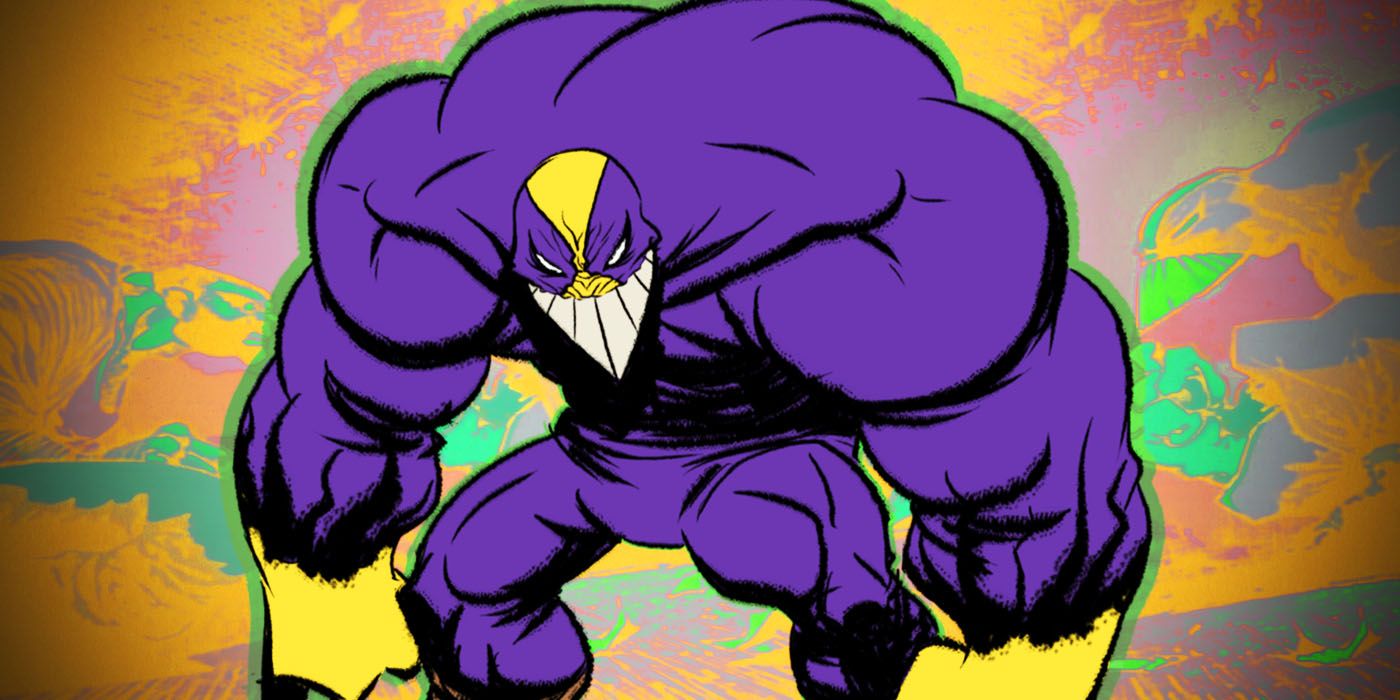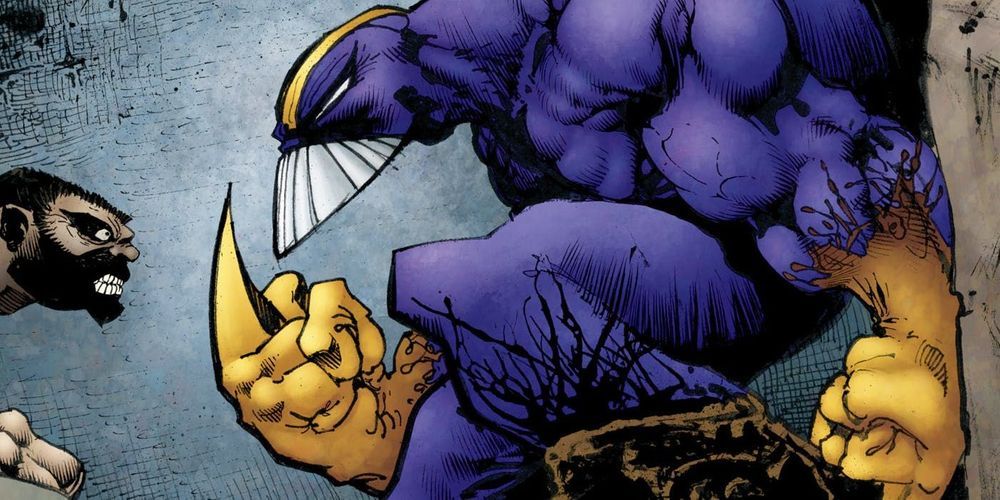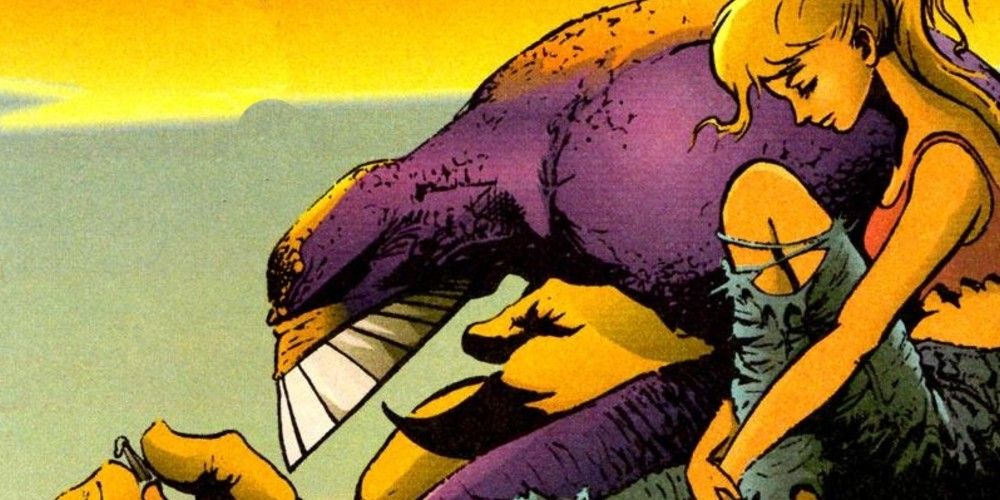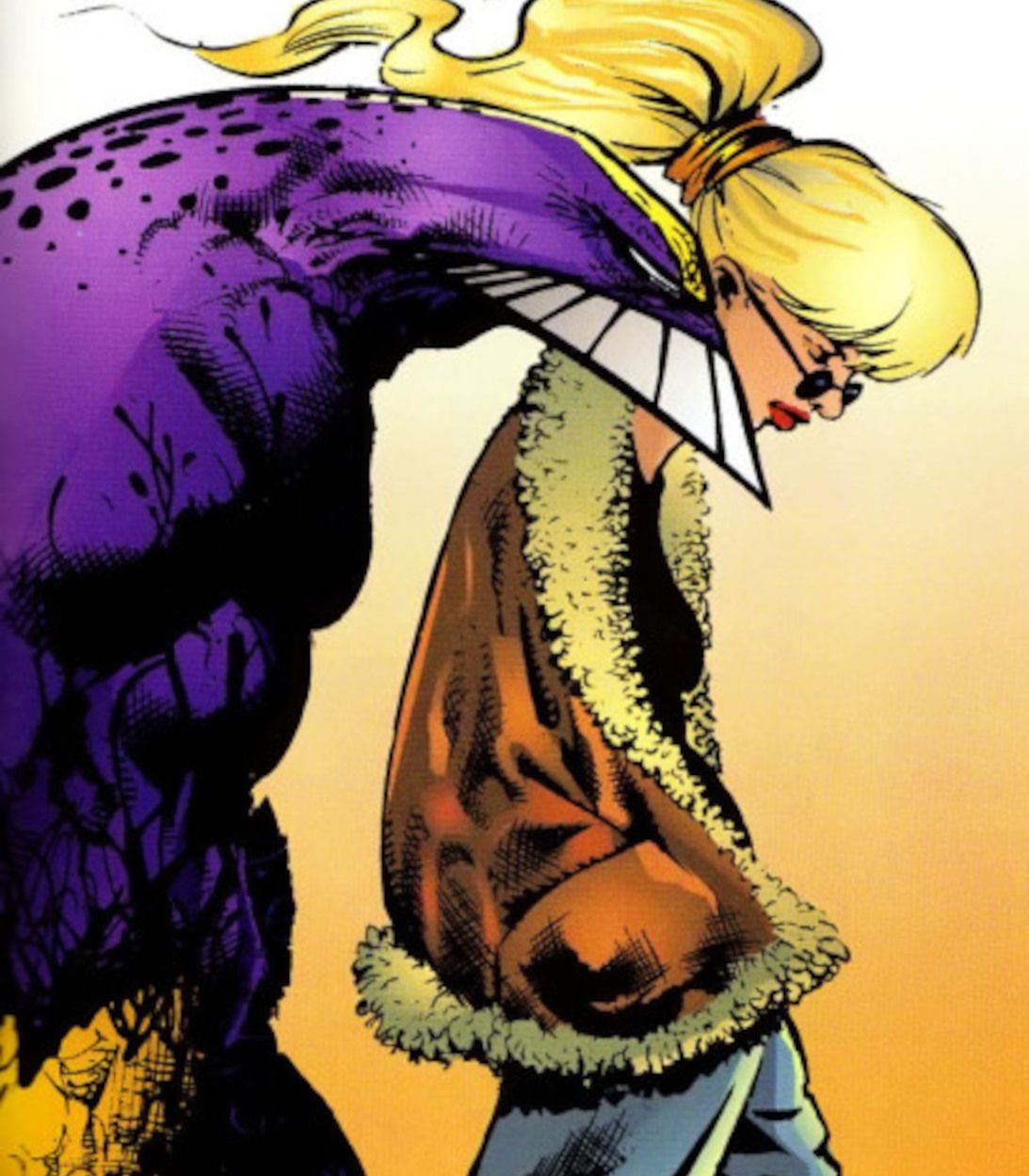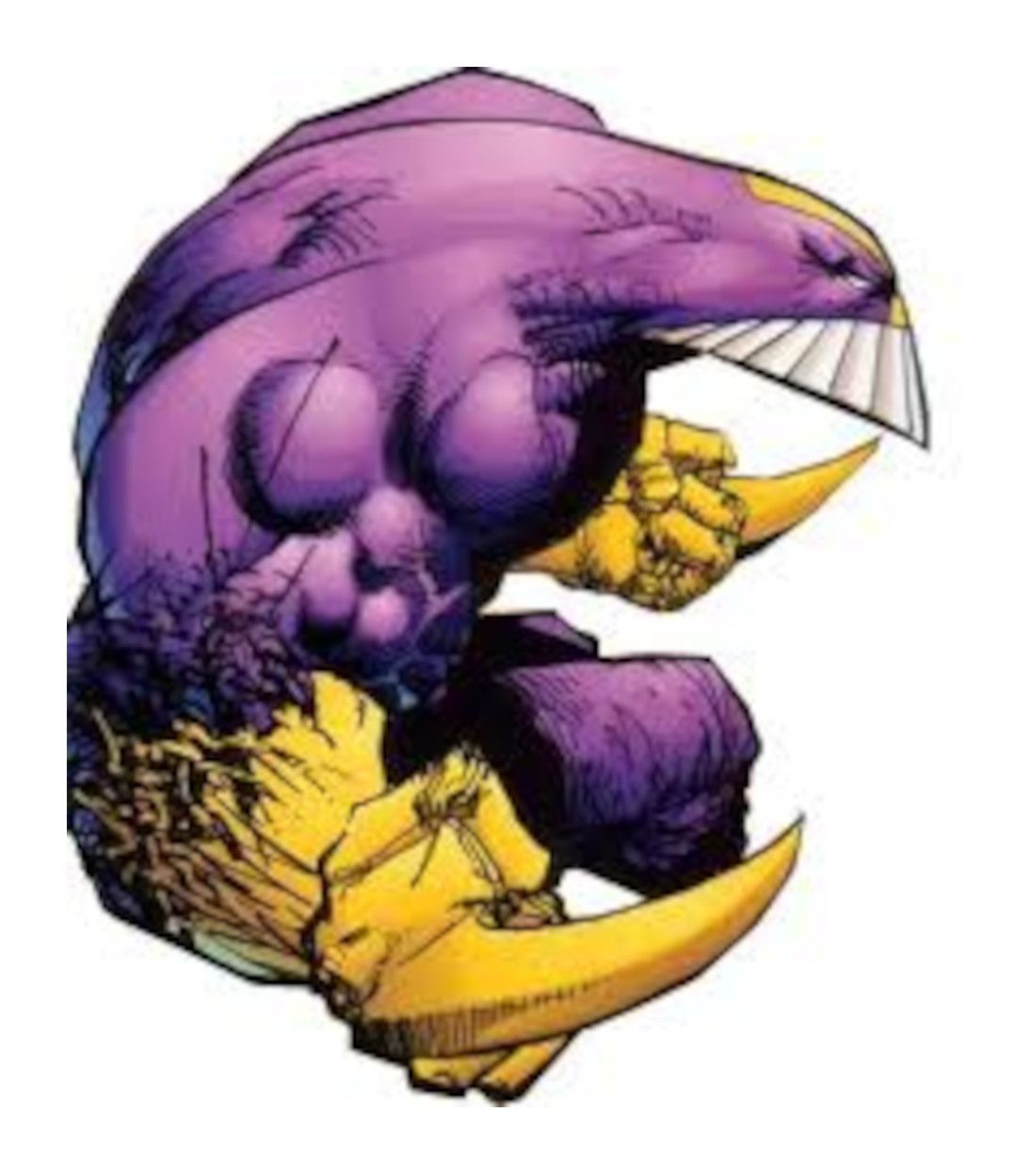Welcome to Adventure(s) Time's 153rd installment, a look at animated heroes of the past. If you have any suggestions for the future, let me hear them. Just contact me on Twitter. This week, the odd circumstances behind the odd ending to The Maxx's rather odd MTV adaptation.
Known today for its slate of reality programming and the ubiquitous comedy clip show Ridiculousness, it's difficult to imagine a time when MTV served as the home for quirky, adult-oriented animation. One of the strangest series from this era was MTV's Oddities, an anthology cartoon originally envisioned to house both The Head (the story of a young man who awakens with an enlarged cranium that now houses a small purple alien) and The Maxx, a reverential adaptation of Sam Kieth's Image Comics series.
Debuting in 1993 as a part of the Darker Image anthology comic, which also featured creations from Rob Liefeld and Jim Lee, a monthly The Maxx title from Kieth soon followed. Headlining the second wave of Image's creator-owned titles, The Maxx featured a homeless superhero who struggled with his sanity, shifting between big-city reality and a dream world dubbed "the Outback" due to its resemblance to the remote, sparsely populated region of Australia. Maxx's only friend was Julie Winters, a "freelance social worker" who always bailed Maxx out of jail. Julie was also determined to cheer up a sullen teen named Sarah, who just happened to be the daughter of the serial killer obsessed with Julie. MTV producer Abby Terkuhle became a fan of Kieth's not long after the comic's release and pursued the television rights.
Behold...MTV's Oddities
The original plan for Oddities was to have the two stars share each thirty-minute episode, with fifteen minutes devoted to The Head and, after the commercial break, another fifteen minutes for The Maxx. The plan was reportedly jettisoned to give The Maxx more time to finish its initial batch of episodes, meaning each Oddities episode would premiere with two stories about a single star. The conceit of fifteen-minute episodes (closer to eleven minutes, minus the commercials) fit The Maxx perfectly, as the average issue of the comic fit comfortably within this time limit.
Sam Kieth and his co-writer Bill Messner-Loebs participated in the adaptation, and the producers stayed true to their pledge to do The Maxx justice. In spite of a limited budget, the series featured impressive vocal performances, an evocative musical score, and innovative animation techniques. There are also some Maxx moments that are exclusive to the show.
An early episode ran short, so Kieth conceived a lengthy pan of the city to bridge two scenes. Featuring a new cityscape painting from Kieth and narration from Julie that reflects her point of view on urban living, the sequence's haunting tone is a highlight of the series.
A later episode has the payoff for Sarah meditating on a horse sculpture, a sequence planned for the comic but cut for space. The show allowed fans to see Sarah's long-awaited epiphany, as she breaks down remembering the inspirational quote from a Margaret Keane-style "big-eyed kid" painting. (Sarah would later betray Julie, thanks to the machinations of what appears to be a talking slab of sculptor's clay. It was that kind of book.)
The "Cheat" of an Ending
One problem with directly adapting the comic was the reality of the show's schedule. Typically, one issue of the comic equaled one episode, and each installment of Oddities had two Maxx episodes every week. The comic was only being released once a month and would at times fall behind schedule. Producers realized they were burning through the source material as the episodes went on. Ultimately, the Oddities episodes adapted the Maxx story from Darker Image #1, the mail-away The Maxx #1/2 comic, in addition to issues #1-11 of the regular series. The final Oddities episodes ended up adapting comics that were only a few months old at the time of their broadcast.
Unsure if MTV would order a second season, the producers had to end the series with something that could at least hint at a satisfying conclusion. The mystery connecting Maxx, Julie, Sarah, and the villainous Mr. Gone had yet to be revealed in the comic, and the TV show wasn't going to be spoiling Kieth's big reveals. In fact, Kieth wouldn't spell out the answers until Maxx #19-20, released several months after the Oddities episodes concluded.
While the comic gathers the cast for an emotional catharsis, the cartoon ends with an adaption of Maxx #11, an issue that concludes with Julie abandoning the Maxx, hoping to find a respite from their absurd adventures and some inner peace away from the city. Rather than closing with the image of Julie's moving truck, the show instead flashes to a sequence unfamiliar to comics fans. From the city, the scene shifts to what appears to be the prehistoric Outback. However, a modern greenhouse sits amongst the grassy field.
Having stripped out of his purple superhero outfit, the Maxx enters this greenhouse and uses a pair of spades (shaped like the claws attached to his costume) to tend to his garden. Sharp-eyed fans will notice his plants resemble the jungle creatures found in the Outback. Although MTV never officially commissioned a second season for the show, even after publicly announcing that one was coming, the Maxx animated series maintained its cult following. Through Amazon, the series was made available for streaming and also released officially on DVD in 2009. On the creators' commentary on the finale episode, Kieth states bluntly, "We sure didn't give people the closure they were looking for."
The topic of the show's vague ending was discussed in the comic's letter column. As a fan would speculate in a letter to Kieth, "Logically, the Outback is totally made of organic material, which means Maxx is tending his Outback after Julie left." Kieth's comments indicate he leans toward this interpretation. (Although Kieth was always open to fans having their own interpretations of the stories.) Without Julie's influence, Maxx is free to go through his own process of self-discovery.
The True Answers Are In the Comic
Regarding the official Maxx canon, the comic would go on to reveal that Julie created the Outback to escape the real world following a sexual assault that occurred in college. Later triggered by memories of the incident, Julie accidentally ran over a plumber named Dave. While looking for something to cover his body, Julie was unaware a nearby lamp was knocked into a hole in reality, created by Mr. Gone (who was practicing his mystical abilities and spying on Julie's subconscious life, represented by the Outback).
The lamp briefly entered the Outback, bounced back into reality, and the purple lampshade would magically expand over Dave's body, creating the Maxx. Maxx #20 would feature the inversion of the cartoon's ending -- Maxx is now leaving Julie behind, even though she wants him to stay.
The Oddities' added sequence was made from necessity and never adapted for the comic, but it's an appropriate ending for the animated series. The Maxx isn't offered an immediate release from his burdens but instead an opportunity to tend his own garden, hinting that he might find some inner peace away from his role as Julie's protector.

